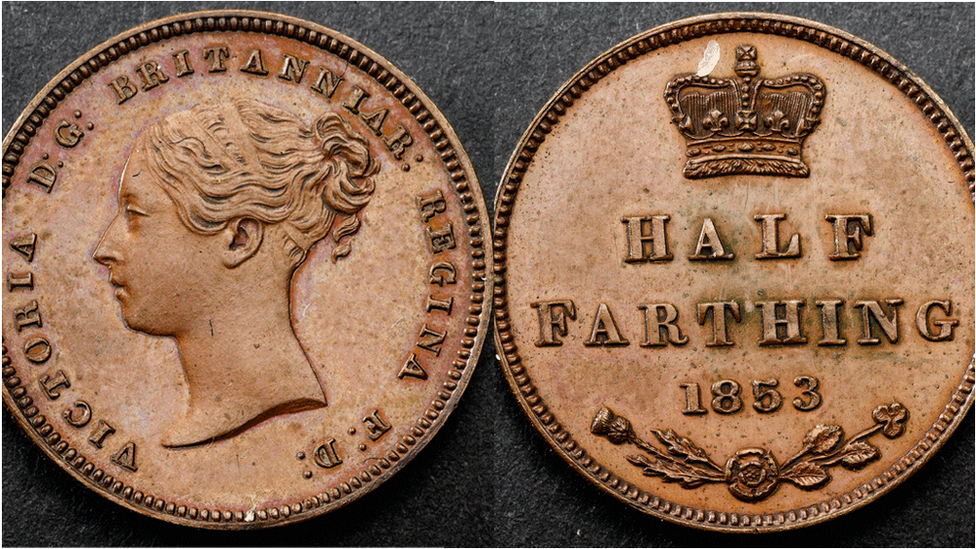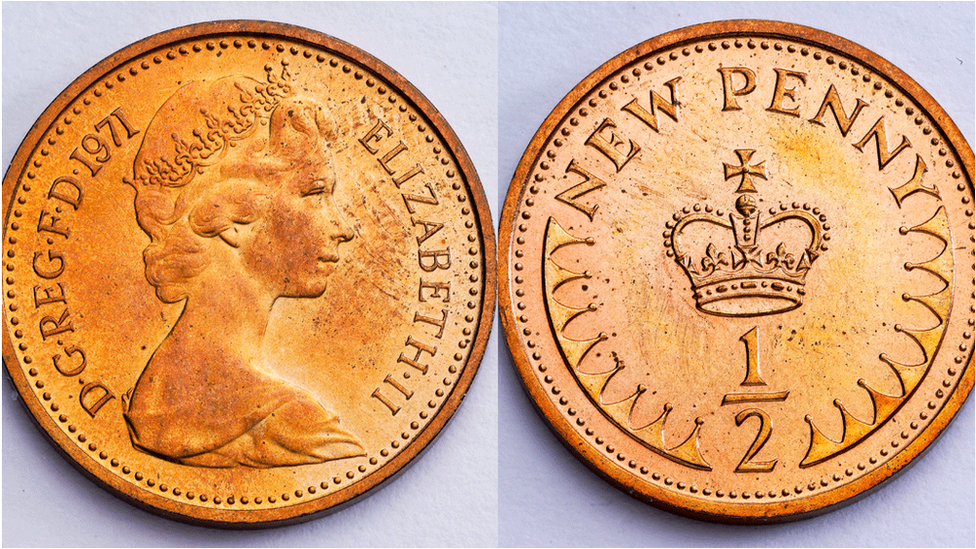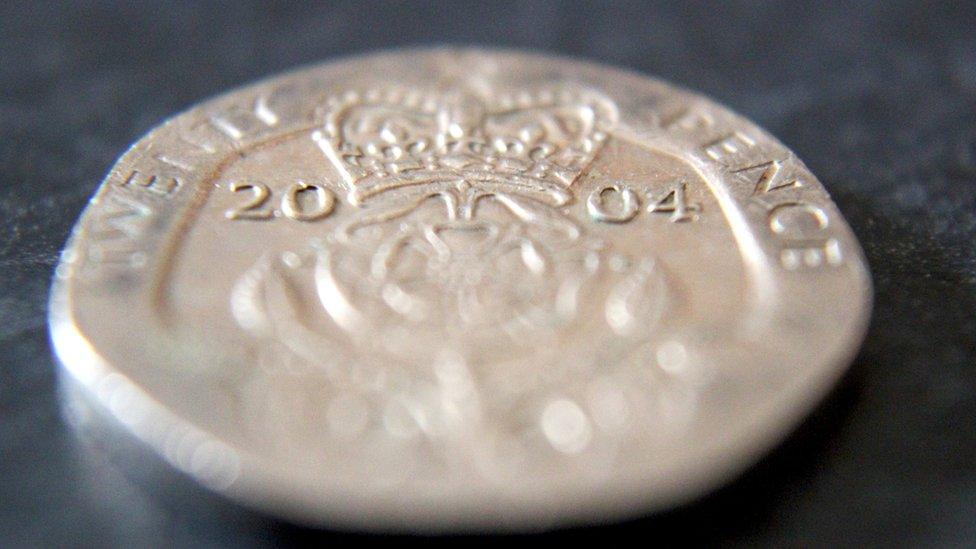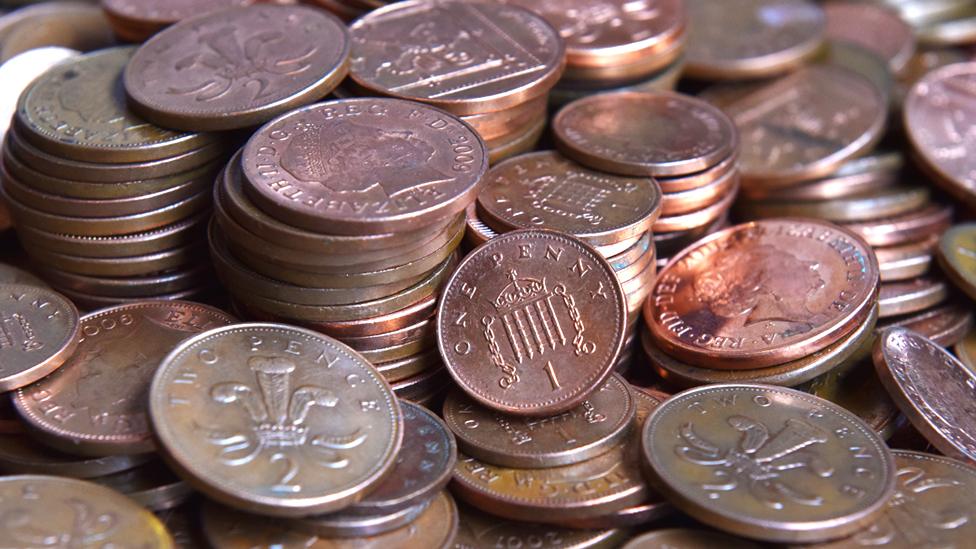What is the least valuable British coin ever?
- Published

The government has decided to keep the penny piece following a consultation, despite the suggestion from a survey that six in 10 of UK 1p and 2p coins are only used once before being put in a jar or discarded.
One argument for the withdrawal of the 1p piece, raised in the government consultation on the subject, external, is that its value has been falling, meaning that it's becoming less useful compared with the cost of producing and distributing it.
This led the Reality Check team to wonder if it is in fact the least valuable British coin there has ever been.
And that in turn led us to Queen Anne, who came to the British throne in 1702 pursuing greater political integration between England and Scotland. Five years later, Article 16 of the Act of Union declared that for the first time all of Great Britain would have the same currency - so that seems like a good starting point for British coins.

In 1707 the smallest coin was the farthing, which was a quarter of a penny.
At the time there were 240 pence to the pound - that was changed in 1971 when the currency went decimal, with 100 pence to the pound, as it is today.
If you put the value into the Bank of England's inflation calculator, external, it turns out that a quarter of a penny in 1707 was worth about 25p in 2018 money.
Comparisons of values over such a long period are somewhat difficult to do, with considerable changes in the sorts of things people were buying then and now, but the difference is large enough to be able to say with confidence that you could buy more with a farthing in the early 18th Century than you can with a penny today.
The farthing was the smallest coin until 1960, except for a 27 year period in the mid-19th Century under Queen Victoria, when there was a half farthing.
Even the half farthing never dipped below a value of five pence in modern terms.


After the farthing was withdrawn in 1960, the halfpenny was the lowest denomination coin until its demise in the run-up to decimalisation.
The pre-decimal penny was the lowest value coin for a few years until 1971, when the decimal halfpenny took over.
The halfpenny was finally withdrawn in 1984 under Margaret Thatcher's government, when it was worth 1.6p in 2018 money, 60% more than a penny piece is today.

The decimal halfpenny featuring Queen Elizabeth II was withdrawn in 1984
So we can conclude that since at least 1707, Britain has not had a coin worth less than the current 1p piece.
Nonetheless, the government decided to keep the 1p and 2p coins, noting their historic and cultural importance, concerns that prices might go up if prices were rounded up to the nearest 5p and "a number of responses from the seaside amusement industry", which didn't want to lose the "2p push machine".



- Published10 May 2019

- Published3 May 2019
